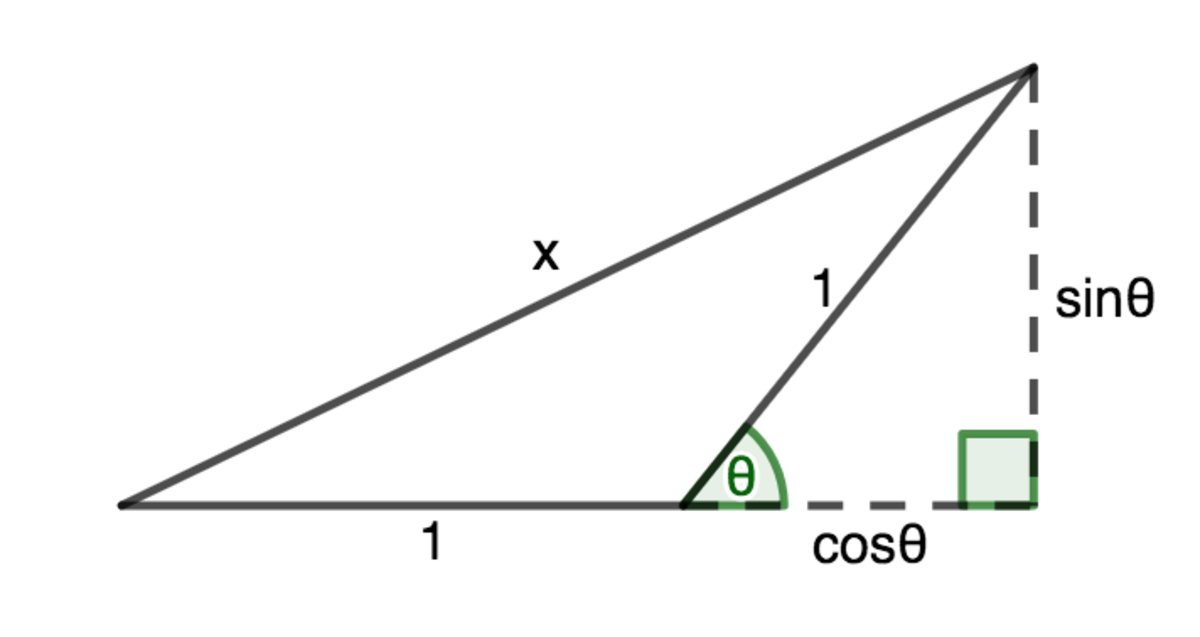Pebble Dragging
A pebble is at a certain point A on the ground. You drag it to a point B , forming a straight line of length 1 on the ground. Then you do it again from B , dragging the pebble to another point C and thereby making another straight path of the same length 1. But this line doesn't deviate more than 90 degrees from the direction of the first line.
If the second path was chosen completely at random (but still respecting the above description), what is the average of all possible distances between A and C ?
The answer is 1.8006326323142121391103983820134.
This section requires Javascript.
You are seeing this because something didn't load right. We suggest you, (a) try
refreshing the page, (b) enabling javascript if it is disabled on your browser and,
finally, (c)
loading the
non-javascript version of this page
. We're sorry about the hassle.
Consider the following diagram: The length x can be found using the Pythagorean Theorem:
x
2
=
sin
2
θ
+
(
cos
2
+
1
)
2
=
sin
2
θ
+
cos
2
θ
+
2
cos
θ
+
1
=
2
cos
θ
+
2
where in the last step we use the trigonometric identity
sin
2
θ
+
cos
2
θ
=
1
. Taking the square root of both sides and applying the double angle identity
cos
2
ϕ
=
2
cos
ϕ
−
1
yields
x
=
2
cos
θ
+
2
=
4
cos
2
(
2
θ
)
=
2
cos
(
2
θ
)
The length x can be found using the Pythagorean Theorem:
x
2
=
sin
2
θ
+
(
cos
2
+
1
)
2
=
sin
2
θ
+
cos
2
θ
+
2
cos
θ
+
1
=
2
cos
θ
+
2
where in the last step we use the trigonometric identity
sin
2
θ
+
cos
2
θ
=
1
. Taking the square root of both sides and applying the double angle identity
cos
2
ϕ
=
2
cos
ϕ
−
1
yields
x
=
2
cos
θ
+
2
=
4
cos
2
(
2
θ
)
=
2
cos
(
2
θ
)
Now, to find the average value of x , we must find b − a 1 ∫ a b x d θ where 0 ≤ θ ≤ 2 π . Thus we must evaluate π / 2 1 ∫ 0 2 π 2 cos ( 2 θ ) d θ = π 2 [ 4 sin ( 2 θ ) ] θ = 0 2 π = π 8 ( 2 2 ) = π 4 2 ≈ 1 . 8